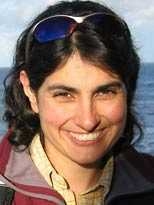Two research projects involving MIT physicists are among the top ten physics stories of the year, as ranked by the American Institute of Physics.
Among the year's highlights is research led by Nergis Mavalvala, associate professor of physics at MIT and a member of MIT's LIGO (Laser Interferometer Gravitational-wave Observatory) Laboratory. In April, Mavalvala and others reported that they had cooled a coin-sized object to 0.8 degrees Kelvin (0.8 degrees above absolute zero).
To reach such extreme temperatures, the researchers combined two previously demonstrated techniques — optical trapping and optical damping. Two laser beams strike the object, one to trap it in place, as a spring would (by restoring the object to its equilibrium position when it moves), and one to slow (or damp) the object and take away its thermal energy.
The study marked the coldest temperature ever reached by laser-cooling of an object of that size, and the technique holds promise that it will experimentally confirm, for the first time, that large objects obey the laws of quantum mechanics just as atoms do.
Also on the American Institute of Physics' top-ten list is the MinibooNE experiment, which confirmed a critical aspect of the Standard Model of Particle Physics. MIT postdoctoral associate Jocelyn Monroe, a Pappalardo Fellow, was a member of the MinibooNE research team and presented the results April 11 at MIT.
The MinibooNE experiment, conducted at the Fermi National Accelerator Laboratory outside Chicago, was designed to investigate the possibility of the existence of a fourth type of neutrino (tiny elementary particles that are components of atoms).
The Standard Model of Particle Physics predicts the existence of three types of neutrinos, but results of experiments conducted in the 1990s offered indirect evidence for the possibility of a fourth type of neutrino. The MinibooNE experiment confirmed that there are only three types of neutrino.
To see the rest of the top-ten list, visit www.aip.org/pnu/2007/split/850-1.html.







